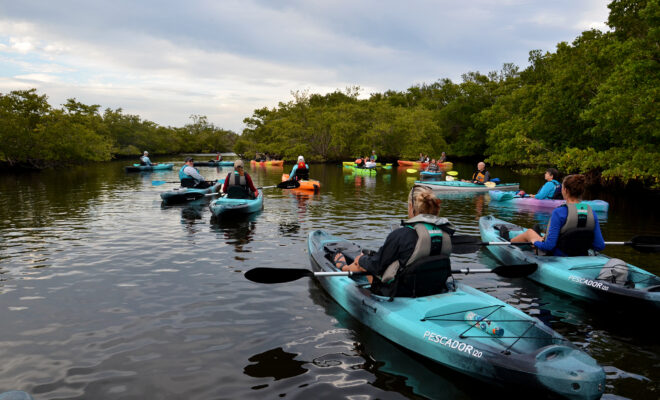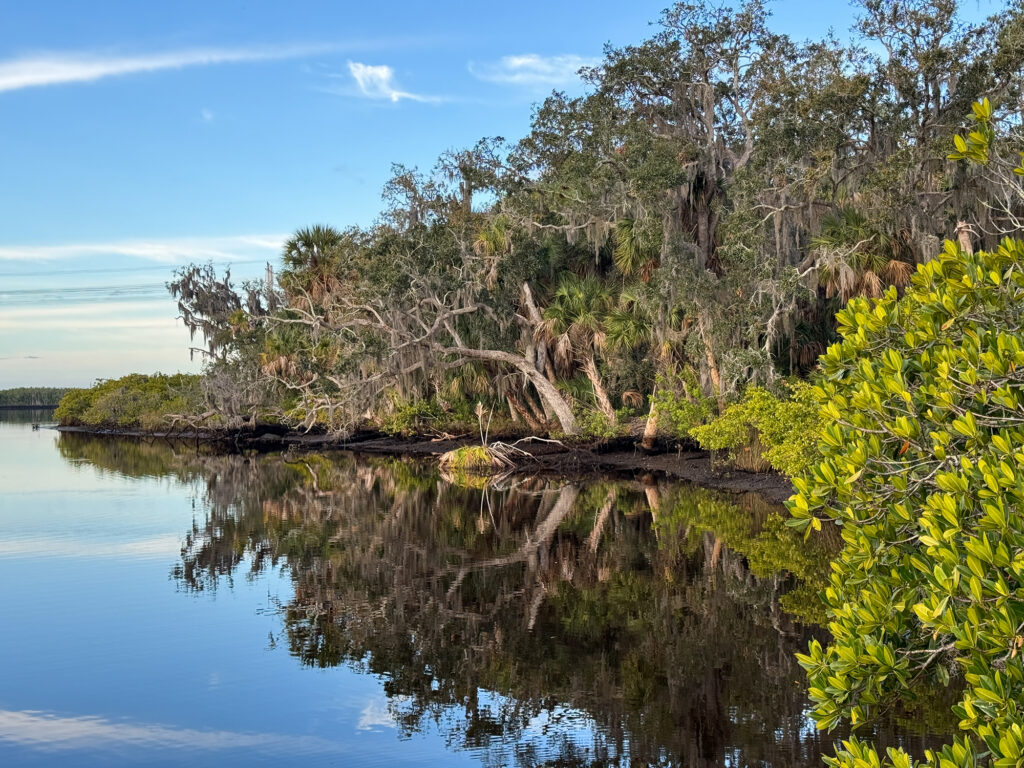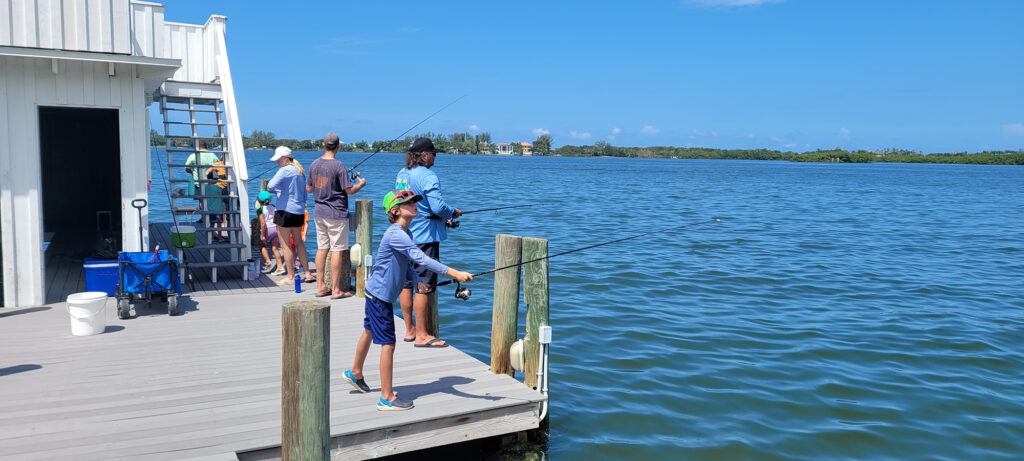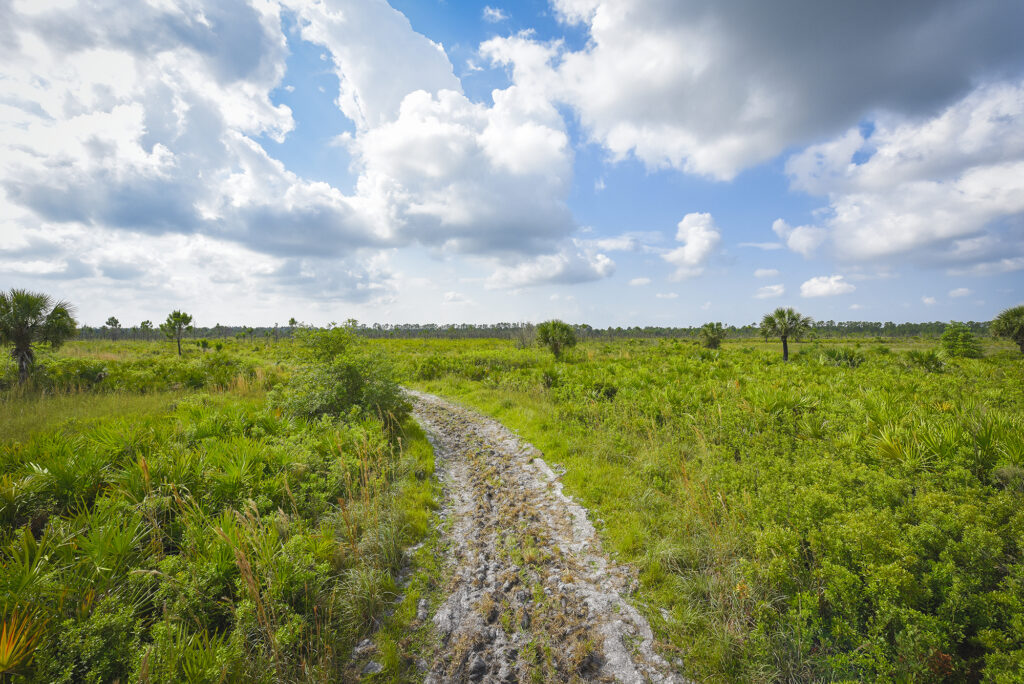
Feature
Celebrating 20 Years of Conservation | The Impact of Conservation Foundation of the Gulf Coast
By Hallie Peilet Young | April 2024
In the heart of Florida’s ever-expanding landscape, Conservation Foundation of the Gulf Coast stands as a beacon of environmental stewardship, celebrating two decades of unwavering commitment to land conservation. The tangible strides made by the Foundation do not come without daily challenges faced and the collaborative spirit that defines their mission.
Board Chair Rob Brown says the mission is, and always has been, simple.
“It’s about conserving land forever and there’s a myriad of ways we do that,” Brown said. “But that’s the bottom line. It’s what we’re here for.”
Board Member and Land Protection Committee Chair, Pat Carlton, says their job is to find the pieces of land that are environmentally sensitive and/or vulnerable that need to be saved from development.
Carlton says with a thousand people moving to Florida every day, that gets more and more challenging.
“It’s like there’s a time clock that’s ticking. There’s a lot of things that are going on. We’ve got a lot of pressures,” Carlton said. “Agribusiness is struggling in a lot of areas. And people are making some generational decisions about their property. We hope to be able to help them make a decision to conserve their property.”

Fundraising plays a major role in how well they’re able to conserve land, with help from events like their annual Feast Upon the Fields. But there’s a lot more that goes into land conservation than raising money.
“We’re bringing buyers and sellers and funding sources together and educating landowners and future conservation buyers on opportunities available to them – it takes a fair amount of time to go through that process,” Brown said.
It can sometimes be a decade-long process, but Carlton feels lucky to have the bandwidth to tackle it all. He says their staff, supportive volunteers, and monetary reserves all set them apart as a land conservation agency.
“There’s a lot of organizations that aren’t fully staffed that don’t have the ability to do things quickly. We can move if we need to. We can move pretty quickly,” Carlton said. “We also have a dedicated Land Fund available to step in immediately in some of these projects. And that’s one thing that gives us the flexibility to move and navigate some of these very complex projects.”
And the foundation has grown to a point where external environmental agencies, like state parks, are reaching out to them for help.
“Because they recognized a project needed to be handled quicker than they could do it,” Brown said. “So they trust us to do it, and we provide the speed aspect.”
So, why is conserving this land so important? Carlton says it’s because of how unique Florida’s environment is.

“We have estuaries, we have the Gulf of Mexico. We have rivers, we have some very sensitive lands inland. We have swamps, we have a lot of areas and environmental topography that’s really, really unusual,” Carlton said.
Not to mention the animals all around the state that depend on a safe and stable environment.
“The creatures that live out there need to continue to have the same type of environment,” Carlton said. “And we can’t just shovel the environment around with bulldozers and then move it from one spot to the other. It needs to be kept in place and needs to be kept in the current state.”
Brown also points out the importance of connecting conserved parcels of land to create corridors throughout the state. A critical factor in keeping native species like our state animal, the Florida panther, safe.
“Our dream is to create a corridor connecting Duette Preserve in Northeast Manatee County, all the way down through the Myakka Island and state park, then down to Babcock Webb, and from there down into the Everglades,” Brown said. “With that connectivity, an animal with a range as large as a male panther would hopefully have less chance to get run over, and there are benefits for other animals too.”
Brown says Conservation Foundation’s efforts also directly affect water quality, citing examples like the 2018 bout of red tide and the infamous Piney Point incident.
“It’s top of mind when people can’t go to the beach, or you can’t have your wedding at sunset on the bay or the hotel downtown,” Brown said.
But for Conservation Foundation, it’s always top of mind.
“It’s not just the eco-tourism that you would expect, like the kayak guides and the fishing guides and the tourism operators. It has deeper economic roots there as well,” Brown said.
When asked what he thinks the biggest accomplishment of the foundation is thus far, Brown didn’t think twice.

“It’s conserving Orange Hammock, which is one particular parcel that’s over 5,000 acres. And it was pretty much the largest parcel available in Sarasota,” he said.
And it took about 20 years of fundraising and collaboration with other agencies to make it happen.
“It went all the way up to the cabinet-level with the governor willing to be flexible and agreeing to let us fundraise to backfill,” Brown said.
In addition to their land conservation efforts, Conservation Foundation is also a champion in nonprofit collaboration. They work with several local youth-serving nonprofits, such as Boys & Girls Club of Sarasota and DeSoto Counties, ALSO Youth, and Tidewell Hospice Blue Butterflies, to get kids outside and provide special moments in nature.
Additionally, for more than 15 years, Conservation Foundation and Sarasota Audubon Society have partnered for the protection of Snowy Plovers on Siesta Key. They are also fundraising together to Re-Wild the Quad Parcels – 33 acres adjacent to the internationally known Celery Fields – to diversify the habitat, add additional opportunities for passive recreation, and create a destination to be enjoyed by all.
That collaboration is something they plan to continue over the next 20 years, as well as continuing to grow their donor and volunteer base.

“The number of people attending our programs has dramatically increased,” Brown said. “ The number that have joined our legacy society and made major gifts over their lives has increased, and as that becomes a more stable platform, it allows us to do more on the land conservation side.”
Carlton says he also hopes the foundation can become even more skilled in their communication with other state agencies to make the conservation race a faster one before that time clock is up.
“It’s very confusing and very complicated to try to get cooperation. We’ve started to get a little bit more adept and having some upper-level conversations and discussions with the people that make these decisions,” Carlton said. “We’re able to guide these agencies and help them understand what’s happening on the ground. We bring kind of a different perspective. And that sometimes is helpful.”
Brown and Carlton say Conservation Foundation is always looking to grow its volunteer base as well.
Please visit conservationfoundation.com to learn more if you are interested in donating or volunteering.



You must be logged in to post a comment Login